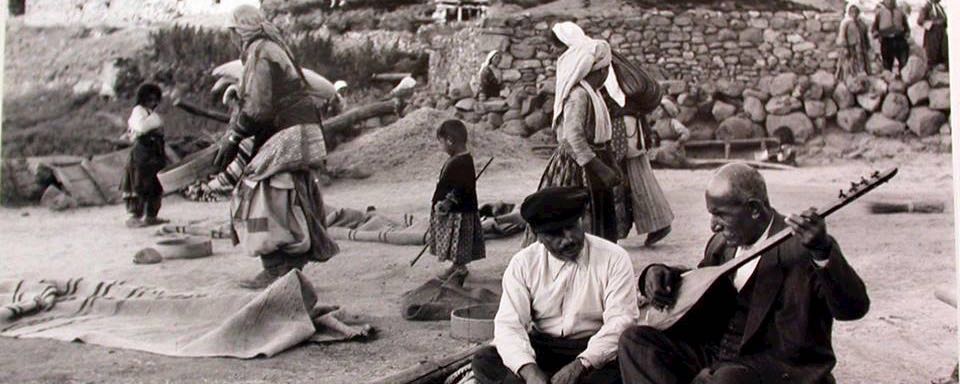The series SOUNDING IMAGES focuses on different approaches to documenting and visualizing musical performances, scenes and movements as well as close collaborations between filmmakers and composers, including soundtracks. The aim of it is to open up a wide range of perspectives on the interrelation of music, experimental filmmaking, and video art, including issues regarding race, class, sexuality and gender. Invited guests will discuss selected works and a short introduction to each screening will provide background information, sometimes a Q&A will follow.
For SOUNDING IMAGES #4, writer Melissa Canbaz selects film material dedicated to the Aşık tradition.
SOUNDING IMAGES is organized by Fiona McGovern.
//
ABOUT
The ASIK tradition is a form of oral folk poetry, which has been performed by nomadic singers and poets since the 16th century, mainly having its origins in central Asia, such as Turkey and Azerbaijan. Both films selected for this screening introduce the cultural and geographical contexts of the Aşık tradition in different ways, shifting from documentation to fiction:
Erksan’s Karanlık Dünya is a biopic on Aşık Veysel, one of the most prominent representatives of the Anatolian Aşık tradition in the 20th century. It is a depiction of this specific form of perfomance, from an ethnographic point of view, partly featuring Aşık Veysel himself.
Director and art historian Metin Erksan (1929–2012) debuted with this film in 1952. With the beginning of the social realist movement following the 1960 coup in Turkey, Erksan established himself as one of the most progressive film makers. He was well-respected for films such as Susuz Yaz (Dry Summer, 1964).
Ashik Kerib is a portrayal of the Aşık tradition, told in a way of Azerbaijan folklore, with music and colour playing a key role. Parajanov’s and Abashidze’s film not only features the main characteristics of an Aşık through score, but also depicts its motifs and topics visually through opulent costumes and settings, designed by Georgian artist Georgi Aleksi-Meskhishvili.
Parjanov (1924–1990) has used film as a primarily visual medium rather than a narrative tool. He was one of the most controversial film makers at its time, constantly being under the suspicion of Soviet authorities. Throughout his career, he was sentenced to several years of imprisonment, mainly because of his subversive proclivities, politically and sexually.
Karanlık Dünya – Aşık Veysel'ın Hayatı (The Dark World – The Life of Aşık Veysel), 1952
by Metin Erksan (Turkey)
Ashik Kerib, 1988
by Sergej Parajanov and Dodo Abashidze (Sowjet Union, Georgia, Armenia)
//
MELISSA CANBAZ is a writer and curator based in Berlin.
///
DI 29.11 // 19H30 // 3-6€
ACUD STUDIO // SCREENING
SOUNDING IMAGES 04:
ASIK – ANATOLIAN FOLK POETRY TRADITIONS
a screening introduced by melissa canbaz
FB Event
Di 29.11.16
Sounding Images 04: Asik – Anatolian Folk Poetry Traditions
ACUD STUDIO 19h30 → Screening
